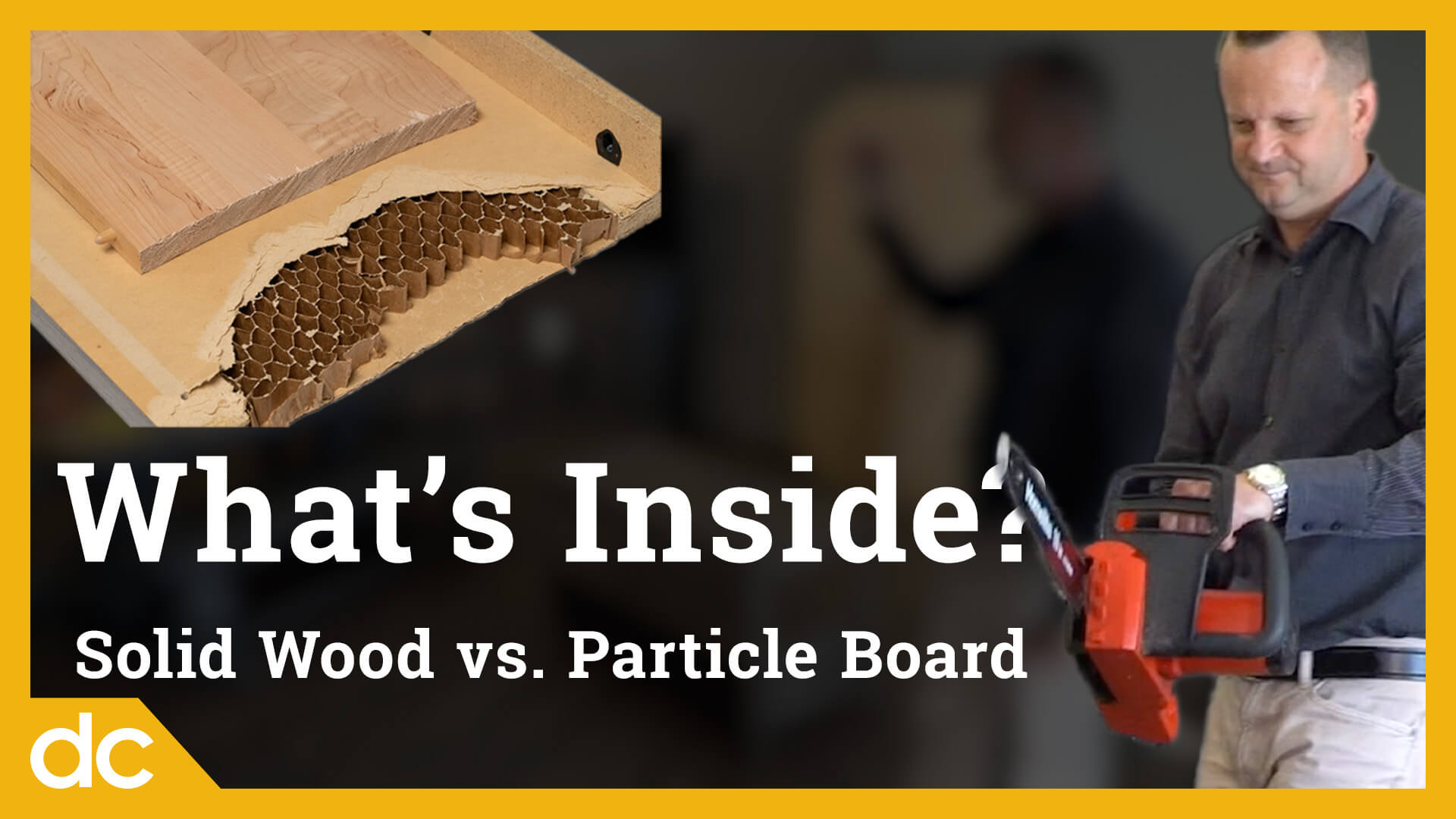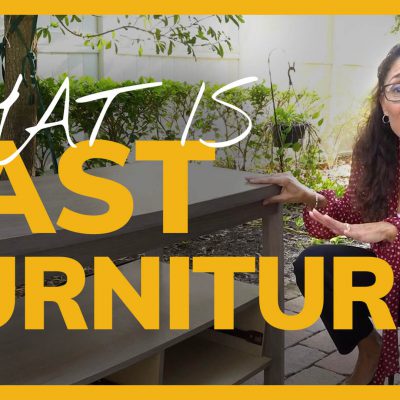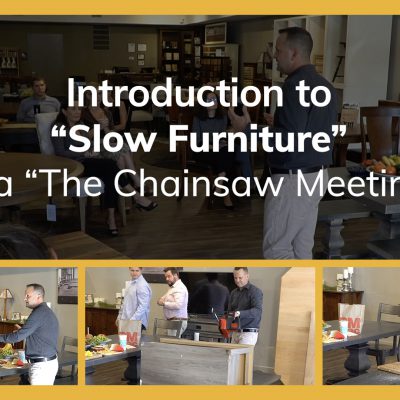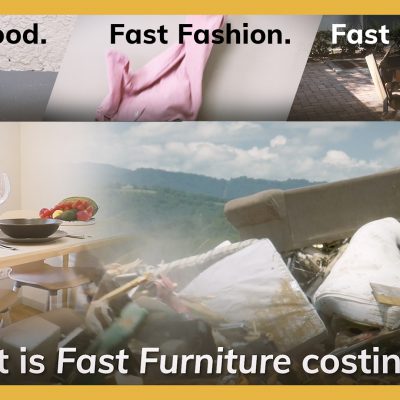We know furniture. But we didn’t know what’s inside a piece of cheap, “particle board” furniture. In a staff meeting recently, DutchCrafters CEO Jim Miller took a chainsaw to two pieces of furniture to compare: particle board vs. solid wood furniture. Now we really know the difference between “fast furniture” and “slow furniture.”
A Chainsaw in a Furniture Showroom
Admit it. You’ve wanted to cut something in half with a chainsaw before! Well, we were more than a little bit surprised when our CEO Jim pulled out a chainsaw in the middle of our Sarasota, FL, showroom to cut a piece of furniture in half. But (spoiler alert) nobody got hurt, and we had a memorable staff meeting!
The Lesson
The topic of the day was Fast Furniture vs. Slow Furniture. Over the past decade, there’s been an explosion of sales of cheap, lightweight furniture made with questionable materials and construction techniques. Much like fast fashion and fast food before that, this furniture has earned the nickname “fast furniture.” This term refers to the speed at which customers expect to receive their furniture. But it also refers to the amount of time it takes to manufacture it. And, unfortunately, the length of its life. This coffee table, in particular, was only two years old when we found it in a dumpster!
Fast Food vs. Slow Food
Jim’s lesson started with a comparison of a fast-food hamburger to fruits and vegetables. This produce represented “slow food,” a term used to describe whole foods and food eaten with intentionality. “Slow food” considers all of the effects that food has, from the treatment of farmers picking it through the health impact the food has on the body.
Fast Furniture vs. Slow Furniture
This is where the lesson transitioned to our domain, furniture. Like the other areas, furniture has a number of impacts on the world. Whereas fast furniture focuses only on the price of the purchase, slow furniture does the opposite. It considers the safety of workers cutting down trees, environmental impact, construction techniques, the health impact of the furniture on the owner, and the length and quality of the ownership experience. This results in furniture that minimizes harmful environmental impact on the world and your home. It is built to last, being passed down through generations instead of going to a landfill within 2 years. For more on Jim’s lesson, watch the long version of this staff meeting: Introduction to Slow Furniture
Particle Board vs. Solid Wood
Inside the Particleboard Furniture
When Jim cut the particleboard furniture in half, we expected some of what we saw. We expected the plastic laminate veneer to quickly give way to particle board underneath. What we didn’t expect was that this particleboard then would give way to reveal an inside of almost nothing. The coffee table’s interior was filled with nothing but a web of cardboard! In some ways, shocking. In some ways, this makes a lot of sense. To minimize the weight, the quantity of material, and the price, they simply made it hollow!
Inside the Solid Wood Furniture
But when Jim cut into our solid wood tabletop, we were even more shocked by what we found! Okay, that’s not true. We knew exactly what we’d see: solid wood grain all the way through. This particle board vs. solid wood furniture experiment says a lot. We’ve always known we sell high-quality furniture. But with a chainsaw and a couple of pieces of furniture, Jim showed us just how much difference there is between Amish furniture and big box store furniture. We won’t forget it. And hopefully, now, you won’t either.





